How the Internet lied to us in 2015

BBC
It was another busy year for journalists debunking fake or misleading images on social media.
In 2015, many pictures and videos went viral, some for all the wrong reasons.
There were deliberate fakes created to deceive the public and then there were misleading images shared, often during breaking news situations, that were entirely unrelated to the story.
Were you caught out by any of these?
The haunting picture shared during the Nepal earthquake
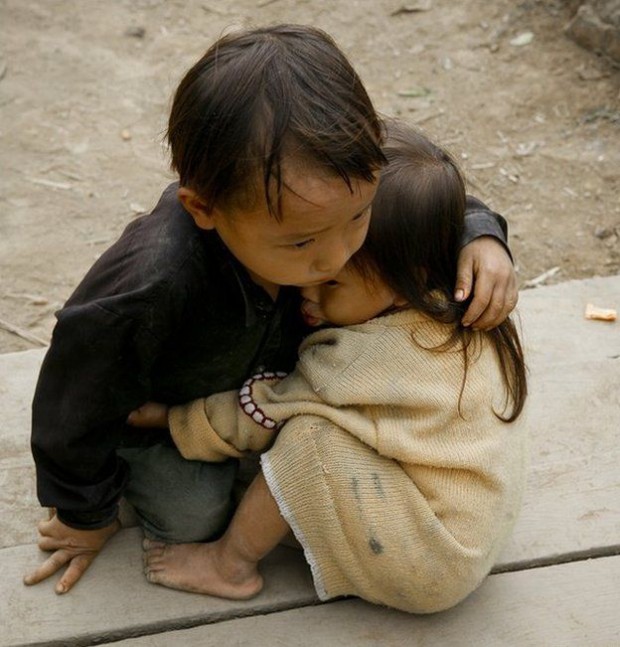
This was one of the most shared photos in the wake of the Nepal earthquake in April. It’s not a fake, but misleading nonetheless.
Labelled as showing a “two-year-old sister protected by four-year-old brother in Nepal”, it was shared across Facebook and Twitter and prompted calls for donations.
The photograph was actually taken in a remote village in Vietnam back in 2007.
“This is perhaps my most shared photo,” says the photographer Na Son Nguyen, “but unfortunately in the wrong context.”
The video of a swimming pool during the Nepal earthquake
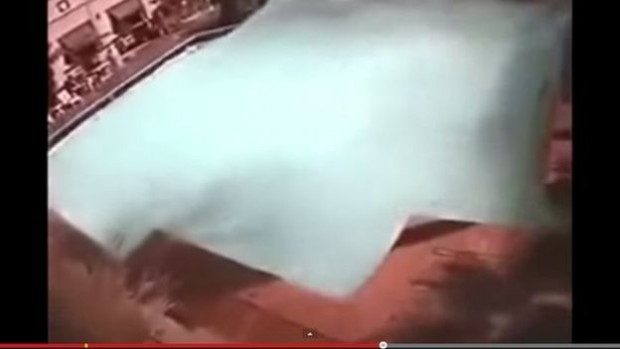
Also during the earthquake, a video appeared on YouTube and Facebook, labelled as security camera footage from a pool in a Kathmandu hotel.
It was used by international media to show the effects of the country’s worst earthquake in 81 years. In fact, it was an old video that dates back possibly to 2010, during an earthquake in Mexico.
The time stamp was altered but people still recognised it, with one YouTube watcher warning, “They drag out this video every time there is a big earthquake.”
Many misleading images were shared during the crisis, including a video of a crumbling building that was actually from Egypt.
And, perhaps in a sign of how all-pervasive misleading images can be, it was featured in Facebook’s year in review video round-up.
The migrant who Instagrammed his route to Europe
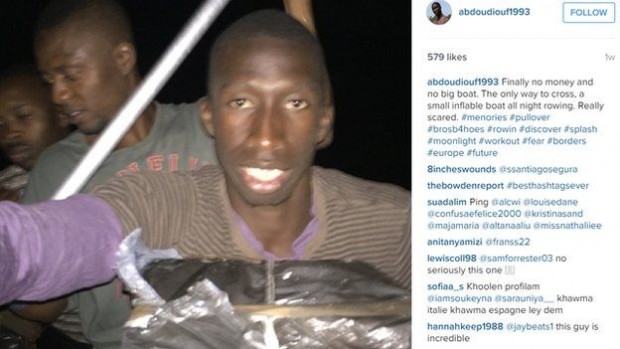
Incredible pictures that appeared to show a man documenting his journey from Senegal to Spain popped up on Instagram during the summer.
The selfies of Abdou Diouf from Dakar were an internet hit, garnering thousands of followers and lots of encouraging comments.
However, there was some scepticism over his use of unlikely hashtags like #InstaLovers and #RichKidsofInstagram and, indeed, it turned out to be an elaborate marketing campaign for a photography festival in northern Spain.
A refugee posing as an IS fighter?
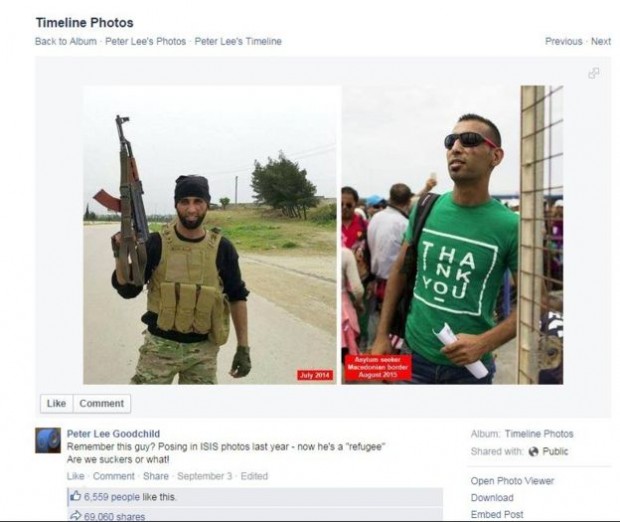
At the height of the refugee and migrant crisis, a set of alarming before-and-after pictures started to spread on Facebook.
“Remember this guy? Posing in ISIS photos last year – now he’s a refugee,” wrote one person.
The man in the photo has since been identified as Laith al-Saleh, a former commander of the Free Syrian Army, a group of moderate rebels that oppose Syrian President Bashar al-Assad. He fled Syria and arrived in Macedonia in August 2015.
After learning the truth, the man who shared it apologised.
A photo of Eagles of Death Metal in concert
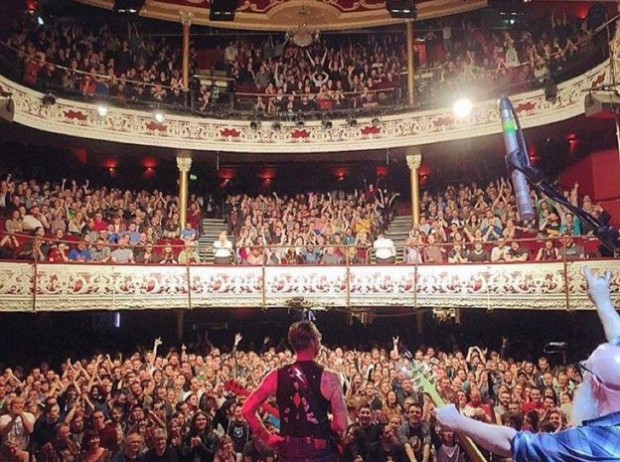
As news broke of the co-ordinated attacks on Paris in November, confusion around the story was added to by a series of rumours and misleading images.
A particularly serious case was this picture, completely inaccurately mislabelled on social media as showing the crowd at the Bataclan theatre just before gunmen began firing.
The picture was actually from an earlier concert, in Dublin’s Olympia Theatre, and had been posted on the band’s Facebook page the day before the attacks.
The empty streets of Paris
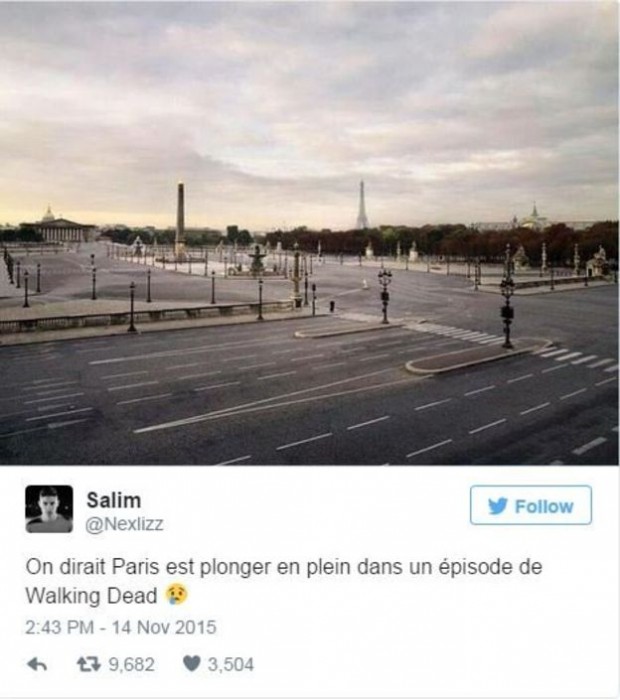
This widely retweeted image purported to show the empty streets of Paris in the aftermath of the gun and suicide bomb attacks.
The picture was actually from a project called Silent World, where photography tricks are used to imagine cities as they might appear at the end of the world.
#YouAintNoMuslimBruv tube sign
When a man allegedly stabbed three people at a London Tube station in December, a bystander shouted “You Ain’t No Muslim, Bruv” and a hashtag was born.
One of the most retweeted images showed an inspiring picture of a London Underground Tube sign, including the hashtag. London mayoral candidate Sadiq Khan was among those who shared it.
Unfortunately, while the sentiment was genuine, the sign was fake. It appears to have been created from a sign generator app.
And finally…a husband’s extreme act of revenge

The story of a divorced German man, who sawed all his possessions in half and then put them up for sale, fooled a lot of people – including some in the media – in June. The eBay auction was real, the story was not.
After the video went viral, with some 4.5 million views on YouTube, the German Bar Association came forward to admit they made it up. as part of a marketing campaign.
Sometimes you have to do things by halves, they suggested.
How to submit an Op-Ed: Libyan Express accepts opinion articles on a wide range of topics. Submissions may be sent to oped@libyanexpress.com. Please include ‘Op-Ed’ in the subject line.
- North African leaders to hold summit in Libya - October 21, 2024
- Libyan MP predicts dollar tax reduction to 5% by Year-End - October 21, 2024
- Debate over CNN’s reporting reignited on X by Musk - October 21, 2024


